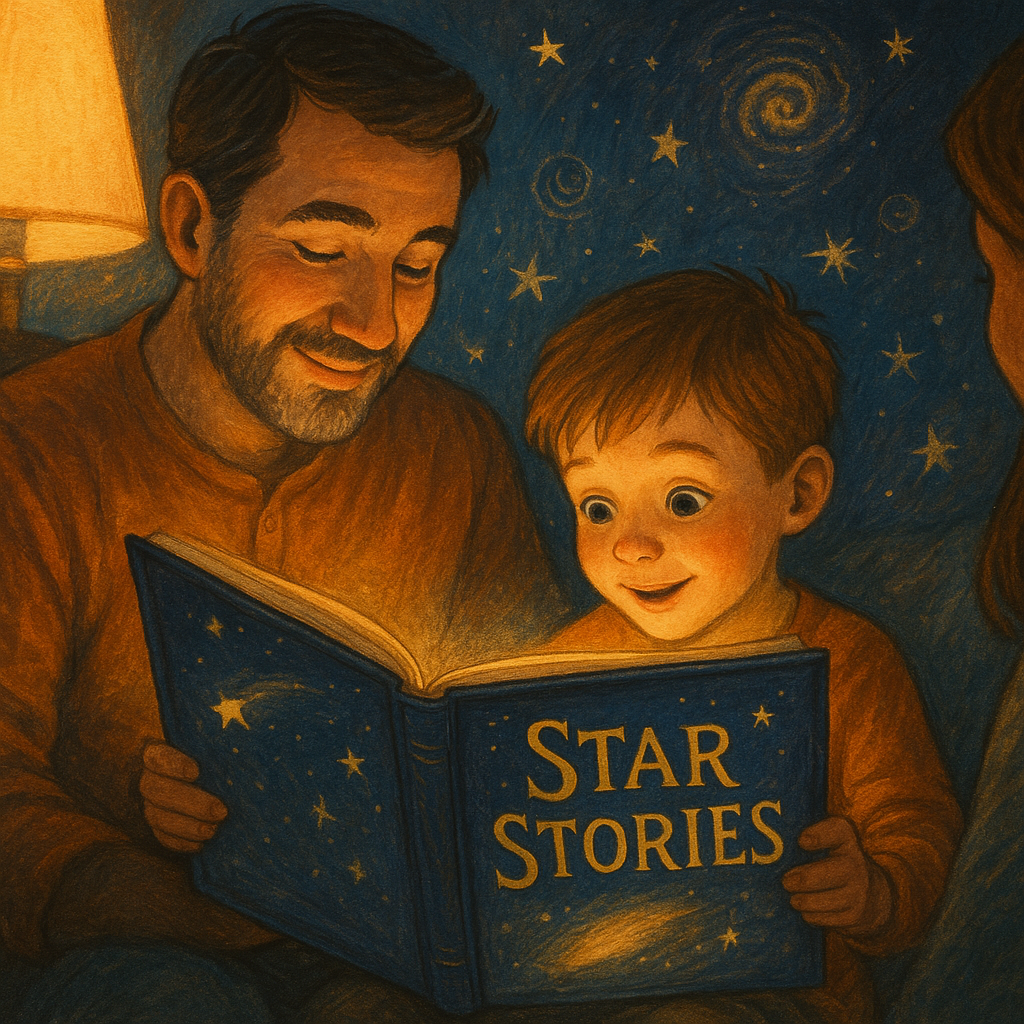From Silent Conversations to Storybook Adventures
“We don’t need more screens—we need more stories we can hold.” — Harold, creator of Star Stories

The Human Story Behind Star Stories
“We don’t need more screens—we need more stories we can hold.”
— Harold, creator of Star Stories
A Childhood Told in Fingers and Faces
Harold’s first language wasn’t English. It was the quick‑silver dance of American Sign Language, learned at eye‑level with his deaf parents long before he could read subtitles. By age eight he was interpreting doctors’ visits and plumbing repairs, flicking effortlessly between two worlds: one quiet, one loud.
That early responsibility forged a super‑power—rapid pattern‑recognition—that later spilled into code, languages (five of them!), and a deep empathy for anyone left out of a conversation.
From Chicken Coops to Codebases
Hands that once nailed boards into a backyard chicken coop now fly across a keyboard. Harold graduated from an Ivy‑League computer‑science program, hitch‑hiked across China, walked the Camino in Spain, and fell in love in Colombia. Each stop added another dialect—Spanish, Portuguese, a dash of Mandarin—but also a conviction: the best creations mix sturdy building blocks with a dash of wonder.
Love, Colombia, and the Problem With Screens
Four years in Medellín taught Harold two things:
- Family > Everything. He married Paola, welcomed son Teddy, and learned that bedtime stories beat Netflix every time.
- We’re raising a generation of swipe addicts. Back in Maine, he saw the same glazed stare everywhere—kids traded playground dirt for algorithmic sugar.
The builder in him asked: What if the same AI that feeds infinite scrolling could feed a child’s imagination—then close the laptop?
The Night Teddy Became the Hero
It started with a single photo. Harold uploaded a grinning snapshot of Teddy into a rough prototype, whispered a prompt, and watched GPT‑powered paint splatter across a digital canvas. Fifteen minutes later Teddy was steering a rocket through a rainforest of shooting stars.
The magic wasn’t the AI. It was Teddy’s face when the book arrived in the mail—a real, turn‑the‑page hardcover that still smells like fresh ink.
How Star Stories Works (in one breath)
- Upload one or more family photos—or simply describe your crew.
- Pick an adventure theme (jungle rescue, lunar mission, first‑day‑at‑school, and more).
- Sip your coffee while the engine weaves words and illustrations (~15 min).
- Edit anything—erase odd AI artifacts, rewrite text, swap colors.
- Click “Send My Book.” $39 covers printing and U.S. shipping.
Result: a keepsake that trades blue light for lamplight.
Why a Physical Book Still Wins
Screens hand you dopamine; paper hands you presence. Kids grasp thickness, smell paper, hear the shhh‑flip between pages. That multisensory ritual is how memories latch.
Harold isn’t anti‑tech—he’s pro‑balance. Star Stories uses AI as the backstage crew so your family can take center stage, offline.
Where the Story Goes Next
- Faster generation (think snack break, not meal prep)
- Global printing—Canada & EU parents, you’re on the waitlist
- Multilingual editions so grandparents can read in Spanish, Mandarin, or ASL gloss
- Seasonal bundles (Halloween mysteries, Lunar‑New‑Year dragon quests)
An Invitation
If you’ve ever wished bedtime stories felt more yours, give Star Stories a whirl. Upload a photo, pick an adventure, and—fifteen minutes later—watch your child see themselves as the hero they already are.
Written for the dreamers who still believe in paper planes and paper pages.
